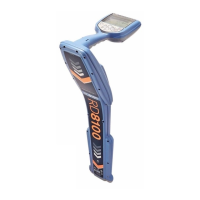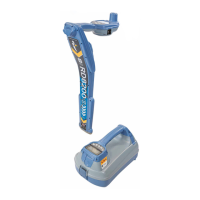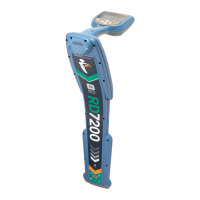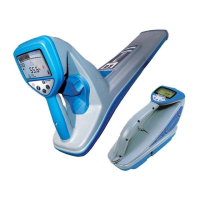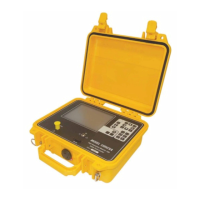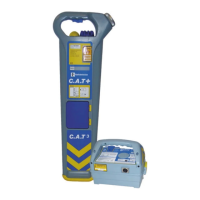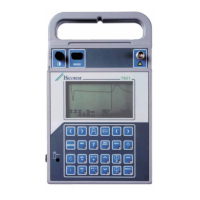RD8000 Operation Manual 31
10.3.2 Available transmitter clamps
Although transmitter and receiver clamps look the same,
they have different internal windings. To prevent the wrong
clamp being connected, transmitters and receiver clamps
have plugs of a different orientation.
Standard signal clamp
The standard clamp applies the transmitter signal very
selectively and effectively to a target cable up to 100mm
diameter at 8/33kHz frequency or up to 75mm diameter
cable at 512Hz.
The standard and small clamps have a double spring
action for positive toroidal contact.
Small signal clamp
The small signal clamp is useful for applying an 8kHz and
33kHz signal to a target cable in a pedestal or other place
with limited space. The clamp is suitable for cables up to
50mm diameter.
Current Direction (CD) and Current Measurement
(CM) clamp
The CD/CM clamp plugged into the accessory socket of
the transmitter enables CD and CM signals to be applied
to individual cables.
10.4 Sondes
10.4.1 When to use a sonde
A sonde transmitter is a small battery powered signal
transmitter that can be inserted into non-metallic ducts,
drains or sewers so they can be located and traced with a
receiver. A wide range of transmitting sondes is available
to suit different applications. Sondes can also be used
to pinpoint joints in iron gas pipes, locate blockages in
plastic water pipes and monitor the progress of horizontal
boring tools.
10.4.2 Choosing a suitable sonde
Check that the sonde has sufcient range for the
application and is dimensionally small enough and
sufciently robust for the application. Ensure that the
frequency of the sonde corresponds with the receiver
frequency; the receiver will not locate the sonde unless
the frequencies are the same. Sondes are marked with
their transmitting frequency. Ensure that the means of
propelling the sonde is available together with the correct
ttings and couplings.
10.4.3 Preparation
Insert a new battery into the sonde. A new battery or a
freshly recharged battery should be used at the beginning
of each day and preferably at the start of each new job.
Before inserting the sonde, check that the sonde and
receiver are at the same frequency and working correctly.
To do this, place the sonde on the ground at a distance
from the receiver that is equal to the rated depth of the
sonde. Point the receiver at the sonde with the antenna
in line with the sonde (the opposite of using the receiver
to locate a line) and check that the bar graph reading
exceeds 50% at maximum sensitivity.
10.4.4 Propelling a sonde
Sondes have a male thread at one end for connecting to
drain rods, or to other devices for inserting and propelling
the sonde along a drain or duct. Sondes may be oated
along drains at the end of a tether and oats are available
for tting to the sewer sonde and super sonde. Sondes
can be strapped to high-pressure water jets or similar
devices used for cleaning, maintaining and inspecting
drains. Sondes used in underground drilling and boring
operations are normally housed in the boring or drill head
behind the boring or drill bit.
Figure 11.5 CD clamp
WARNING!. The transmitter must only be
connected to live services using the appropriate
accessory such as a plug connector or live
cable connector.

